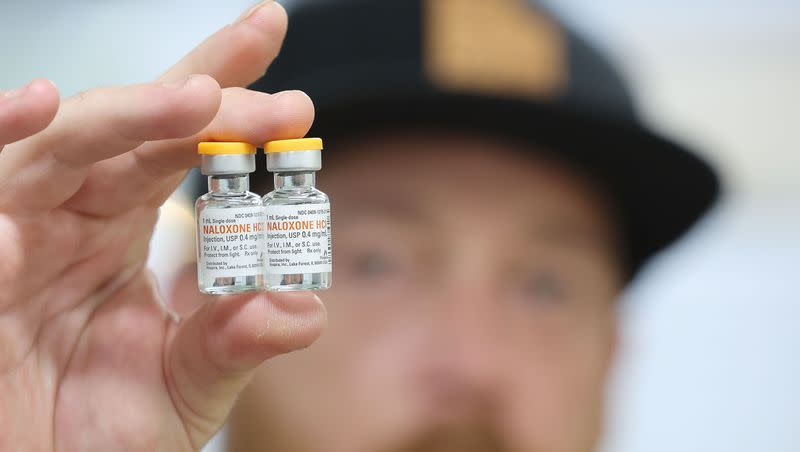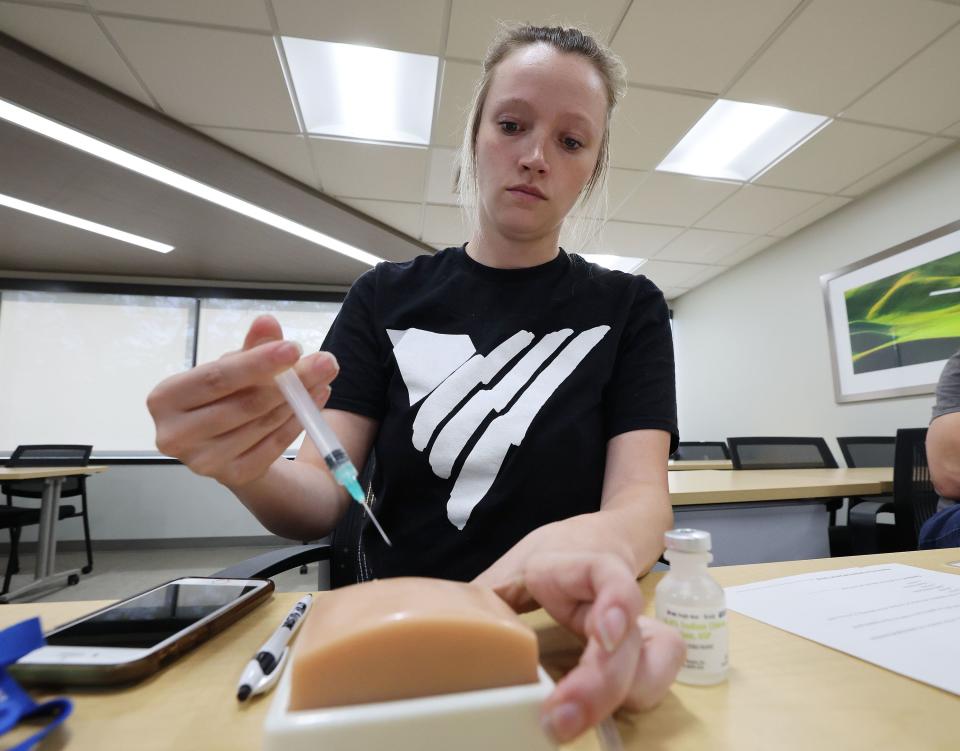‘Flood the state with naloxone’: In the last decade, Utah bucked the national trend of opioid overdose deaths

In the last decade, Utah went from having one of the country’s highest rates of opioid overdose deaths to one of the lowest, bucking the national upward trend that came to a head in 2022, likely the deadliest year for overdoses in the U.S. ever.
In 2012, the Beehive State had 16.1 deaths from opioid overdoses per 100,000 people, tied with New Mexico for second highest rate in the country, according to data analyzed by the Kaiser Family Foundation. Only West Virginia was higher, at 27.1.
“They referred to Utah as Appalachia West,” said Jen Plumb, a physician who started the nonprofit Utah Naloxone after her brother died of an overdose in the late 90s.
By 2021, the most recently available public data compiled by the Centers for Disease Control and Prevention, Utah had 14.1 deaths per 100,000 people, falling to 40th overall, and well below the national average of 24.7.
The trend is similar for all overdoses. In 2012 Utah ranked fourth nationally, at 23.1 per 100,000 people — in 2021, the number fell to 21.1, 42nd overall.
“Utah really woke up. We were fourth in the nation in 2012, which none of us expected, the only states higher than us were Kentucky, West Virignia and New Mexico. When you think about what state Utah is most like, that’s not what anybody is thinking,” said Plumb.
Plumb is also a newly elected Democratic state senator who represents parts of Salt Lake City. She credits a “cultural shift” among both members of the public and state legislature to the decrease in deaths.
“Folks are willing to talk about problems they’re having, or substance-related issue they might be having; more doctors are willing to prescribe or treat folks who need medical assisted treatment ... and the proverbial powers that be have really woken up,” she said, describing conversations with lawmakers where they disclosed their own family’s struggle with opioid addiction.
“They’re not looking to the old standard of ‘lock em up, that will fix it,’” she said. “... There’s a feeling like your community cares about you, which has really made a difference.”
But perhaps the easiest explanation for the drop in deaths, according to Plumb, is the amount of naloxone in Utah, a life-saving opioid overdose reversal drug that can be administered via nasal spray or syringe.

Between 2017 to 2021, the state recorded 297,881 doses of naloxone distributed, according to Department of Health and Human Services, or DHHS, data. A whopping 80% of those doses came from Utah Naloxone, and the rest came from DHHS programs.
“I’m going to say most of that — going from fourth to 42nd — was Dr. Plumb flooding Utah with naloxone,” said Riley Drage, who teaches naloxone training classes for Utah Naloxone.
That’s the nonprofit’s mission — flood the state with naloxone.
“Give out as much naloxone as possible, especially for people who are currently in their addiction or using, unsheltered people — really try to get it into the places where it’s going to be used,” Drage said to a class on Tuesday.
Since the nonprofit started, Plumb says there has been nearly 10,000 overdose reversals. That’s 10,000 second chances.
“If you die from an overdose, you don’t have a chance to get into recovery,” Plumb said.
Utah Naloxone hosts free, monthly trainings where anyone can learn the basics of the overdose reversal drug and receive a free naloxone kit. Some are in person, but since the pandemic, virtual classes have exploded in popularity. On Tuesday, more than 80 people joined the virtual training, and Drage says he’s seen as many as 500 attendees.
While the slight downward trend of deaths in Utah is a cause to celebrate, it’s also an indictment on the state of the opioid crisis nationwide. For instance, West Virginia’s rate of opioid deaths has nearly tripled over the decade, going from 27.1 per 100,000 people to 77.2.
Other states have seen a similar surge. Tennessee went from 11.4 in 2012 to 45.5 in 2021; Kentucky spiked from 15.5 to 44.8; Maine went from 7.9 to 42.4.
And Utah, according to Plumb, is still averaging about one funeral each day from an overdose.

